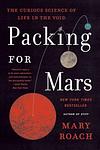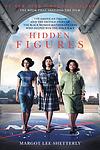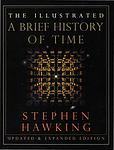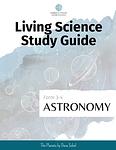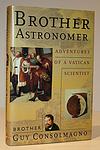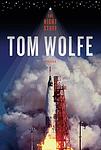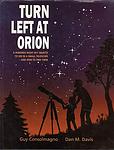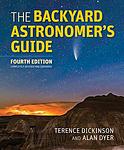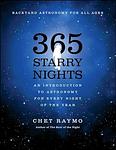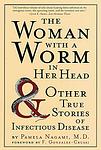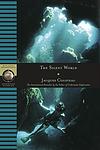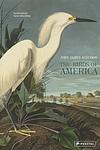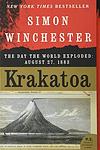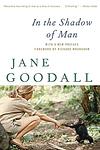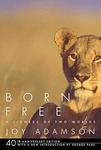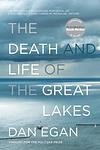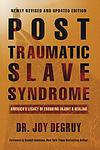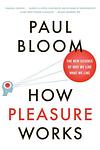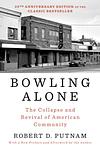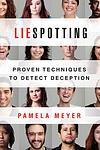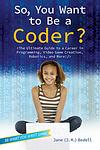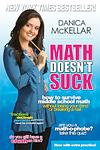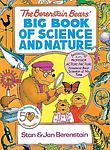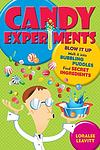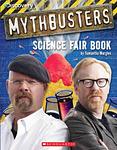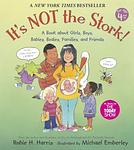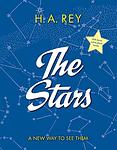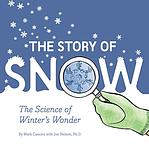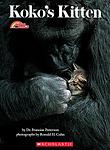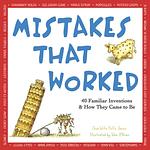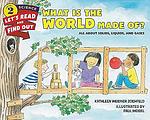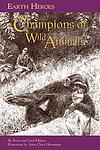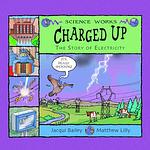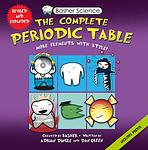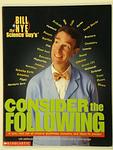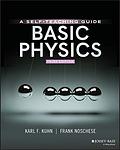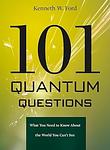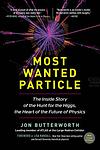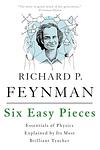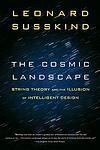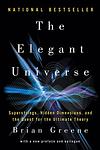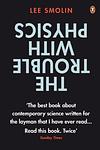100 All-Time Greatest Popular Science Books
This is one of the 288 lists we use to generate our main The Greatest Books list.
-
Cosmos by Carl Sagan
This landmark book is a majestic cosmic tour that delves into the nature of the universe, exploring a vast array of topics including the science of space and time, the origins of life, and the human quest for understanding. It intertwines science and philosophy, taking readers on a journey through the history of astronomy, the development of the scientific method, and the incredible vastness of the cosmos. The narrative is infused with a sense of wonder and awe at the complexity and beauty of the universe, as well as a thoughtful consideration of the place of humanity within it. The work is a celebration of human curiosity and a powerful advocate for the importance of science and education in helping us to understand our world and our place in the cosmos.
-
Packing For Mars by Mary Roach
"Packing for Mars" explores the curious and often humorous aspects of space travel, focusing on the day-to-day life of astronauts and the bizarre challenges they face in zero gravity. The book delves into the nitty-gritty of space exploration, from the complications of personal hygiene and bathroom logistics to the psychological and physical trials of living in confined, alien conditions far from Earth. Through interviews with astronauts, scientists, and mission staff, the narrative reveals the less glamorous but utterly fascinating side of space travel, shedding light on human resilience and ingenuity in the most extreme environments.
-
Astrophysics For People In A Hurry by Neil deGrasse Tyson
This book offers a concise and engaging overview of the fundamental concepts and discoveries in astrophysics. Aimed at busy readers who want to understand the universe but have limited time, it breaks down complex ideas about the cosmos into digestible pieces. Through a series of succinct chapters, the reader is taken on a journey through the scientific laws that govern the stars, planets, and galaxies, as well as the known and mysterious phenomena of the universe. The author's clear, witty style makes the vast and intricate subject of astrophysics accessible and enjoyable, providing insights into how the universe works and our place within it.
-
The Edge Of Physics by Anil Ananthaswamy
"The Edge of Physics" is a captivating exploration into the most extreme and remote scientific observatories around the world, where physicists are pushing the boundaries of our understanding of the universe. The book delves into the challenges and adventures faced by scientists as they work in inhospitable and often dangerous environments—from deep underground mines to high mountaintops and the icy expanses of Antarctica—to conduct experiments that probe the mysteries of dark matter, cosmic rays, and the origins of the universe itself. Through vivid storytelling, the book not only sheds light on cutting-edge scientific research but also reflects on the profound human curiosity and relentless pursuit of knowledge that drive these extraordinary endeavors.
-
Hidden Figures by Margot Lee Shetterly
The book chronicles the inspiring and previously underappreciated stories of African American female mathematicians who worked at NASA during the mid-20th century. These brilliant women, known as "human computers," played a crucial role in America's space race by performing complex mathematical calculations that were essential for the success of numerous space missions, including John Glenn's historic orbit around the Earth. Despite facing racial and gender discrimination, their perseverance and intelligence not only broke barriers but also set new standards for what women and minorities could achieve in fields dominated by white men.
-
A Brief History of Time by Stephen Hawking
A Brief History of Time is a popular science book that explores a broad range of topics in cosmology, including the Big Bang, black holes, light cones and superstring theory. The author does not shy away from complex theories and concepts, but explains them in a way that is accessible to non-scientific readers. The book also discusses the possibility of time travel and the boundaries of scientific knowledge. Throughout, the author emphasizes the ongoing quest for a unifying theory that can combine quantum mechanics and general relativity into one all-encompassing, coherent theoretical framework.
-
Big Bang by Simon Singh
The book explores the history of the universe from ancient cosmological theories to the modern Big Bang theory. It delves into the lives and discoveries of key scientists who contributed to our understanding of the cosmos, including Albert Einstein, Edwin Hubble, and George Gamow. The narrative combines scientific detail with engaging storytelling, explaining complex concepts in an accessible manner. The book also addresses the ongoing debates and experiments in cosmology, providing a comprehensive overview of how the current consensus on the origin of the universe was formed and what questions remain unanswered.
-
The Planets by Dava Sobel
"The Planets" is a captivating exploration of the celestial bodies within our solar system, characterized by a blend of science, history, and personal reflection. The book delves into the unique physical features and mythological stories of each planet, from the scorching surface of Mercury to the icy rings of Saturn. The narrative is enriched with poetic language and anecdotes that link the planets to their cultural and symbolic significances in human history, making complex astronomical concepts accessible and engaging to readers. Through this approach, the book not only informs about the planets but also reflects on their impact on human thought and imagination.
-
Brother Astronomer by Guy Consolmagno
"Brother Astronomer" is a memoir that explores the harmonious relationship between science and religion through the eyes of an astronomer who is also a Jesuit brother. The book delves into the author's journey of faith and his passion for astronomy, detailing his experiences working at the Vatican Observatory. It reflects on the broader implications of scientific discovery, the nature of the universe, and the spiritual questions that arise from exploring the cosmos. The narrative combines personal anecdotes, scientific explanations, and philosophical musings to illustrate how the pursuit of scientific knowledge can be a deeply spiritual endeavor.
-
Mapping The Heavens by Priyamvada Natarajan
"Mapping the Heavens" provides a captivating exploration of the cosmos, tracing the radical developments in our understanding of the universe from historical celestial cartography to modern astrophysics. The book delves into key discoveries and the innovative thinkers behind them, such as dark matter, dark energy, and black holes, while also examining the evolving tools and technologies that have propelled our knowledge forward. Through this journey, the book highlights how our perception of the universe's structure has expanded and how these insights challenge our notions of space, time, and the cosmos itself.
-
The Right Stuff by Tom Wolfe
"The Right Stuff" is a non-fiction novel that explores the lives and experiences of the first Project Mercury astronauts selected for the NASA space program in the 1960s. The book delves into the personal and professional lives of these astronauts, highlighting their courage, competitiveness, and the immense pressure they faced. It also provides a detailed account of the space race between the United States and the Soviet Union during the Cold War era.
-
Turn Left At Orion by Guy Consolmagno, Dan M. Davis
"Turn Left at Orion" is a comprehensive guidebook designed for amateur astronomers, providing detailed instructions on how to locate and observe over 100 celestial objects in the night sky. Using simple language and clear diagrams, the book caters to those using small to medium-sized telescopes. It includes maps that simulate the view through a telescope, making it easier for beginners to navigate the skies. Additionally, the book offers insights into the science and history behind these celestial objects, enhancing the observational experience.
-
The Backyard Astronomer's Guide by Terence Dickinson
"The Backyard Astronomer's Guide" serves as an essential resource for amateur astronomers, providing comprehensive insights into the tools, techniques, and enthusiasm needed to explore the night sky from one's own backyard. The book offers practical advice on choosing and using telescopes and other equipment, tips for observing planets, stars, and galaxies, and updated information on digital photography, which allows readers to capture spectacular celestial images. It also addresses modern developments in technology and stargazing techniques, making it a valuable guide for both beginners and seasoned stargazers looking to enhance their astronomical experience.
-
365 Starry Nights by Chet Raymo
"365 Starry Nights" is an informative and visually engaging book designed to provide readers with a daily guide to the wonders of the night sky over the course of a year. Each page offers a clear and concise explanation of astronomical events and phenomena, ranging from constellations and planets to comets and meteor showers. Accompanied by detailed illustrations and diagrams, the book serves as an accessible introduction to astronomy, encouraging readers to explore and appreciate the celestial marvels that can be observed throughout the year.
-
Black Holes And Time Warps by Kip S. Thorne
This book delves into the fascinating realms of black holes and the distortions in time and space they cause, known as time warps. It explores the complex theories of general relativity introduced by Albert Einstein and further examines how these ideas have been expanded upon by scientists to understand the universe's most mysterious phenomena. Through accessible language, the book explains the physics behind black holes, the nature of time and space, and the cutting-edge technologies used in astrophysics to study the universe. It also discusses the potential implications of these cosmic phenomena on our understanding of reality.
-
The Alchemy Of The Heavens by Ken Croswell
"The Alchemy of the Heavens" offers a comprehensive exploration of the Milky Way, delving into its structure, composition, and the complex processes that govern its evolution. The book examines how stars are born, live, and die, shedding light on the chemical elements they produce, which in turn form new stars and planets, including our own Earth. It also discusses the intriguing mysteries of dark matter and the future of the galaxy, blending detailed scientific insights with engaging narrative to illuminate the workings of our cosmic neighborhood.
-
The Day We Found The Universe by Marcia Bartusiak
"The Day We Found the Universe" is an engaging exploration of the pivotal moments and key figures in astronomy that transformed it from a mere celestial survey activity to a dynamic science capable of measuring the universe. The book vividly recounts the story of how astronomers, through the use of larger telescopes and innovative thinking, began to unravel the vastness of the universe beyond the Milky Way, leading to the revolutionary discovery that the universe is expanding. This narrative brings to life the scientific quests and breakthroughs of individuals like Edwin Hubble who played crucial roles in changing our understanding of the cosmos.
-
The Black Hole War by Leonard Susskind
"The Black Hole War" is a captivating exploration of the fierce scientific debate between Stephen Hawking and Leonard Susskind over the nature of black holes and the fate of information that falls into them. The book delves into the principles of quantum mechanics and general relativity, which seemed to be at odds in the context of black holes. Susskind argues against Hawking's initial claim that information swallowed by black holes is forever lost to the universe, proposing instead that this would violate the fundamental laws of quantum mechanics. The narrative chronicles Susskind’s journey to defend the conservation of information, leading to a profound shift in our understanding of black holes, culminating in the acceptance of the holographic principle which reconciles the theories in question.
-
Breaking The Chains Of Gravity by Amy Shira Teitel
"Breaking the Chains of Gravity" traces the history of space exploration from its earliest inception to the creation of NASA. The book delves into the pre-NASA era, exploring the contributions of key figures and institutions in both America and Europe who laid the foundational technologies and concepts for rocketry and space travel. It highlights the scientific challenges, political drama, and the intense rivalries that shaped the early days of the space race. Through meticulous research, the narrative reveals how the efforts of these pioneering scientists and engineers set the stage for the major advancements in space exploration that would follow.
-
Exoplanets And Alien Solar Systems by Tahir Yaqoob
"Exoplanets and Alien Solar Systems" provides a comprehensive overview of the field of exoplanet research, exploring the methods used to discover and study planets beyond our solar system. The book delves into the various types of exoplanets discovered, the characteristics of these distant worlds, and the implications for understanding our place in the universe. It also discusses the technological advancements and scientific principles underlying exoplanet detection and analysis, offering insights into future prospects and challenges in the field. This work serves as both an informative guide for those new to astronomy and a detailed resource for seasoned researchers interested in extraterrestrial planetary systems.
-
The Immortal Life of Henrietta Lacks by Rebecca Skloot
The book tells the story of Henrietta Lacks, a poor African American tobacco farmer whose cells, taken without her knowledge in 1951, became one of the most important tools in medicine, vital for developing the polio vaccine, cloning, gene mapping, and more. Henrietta's cells have been bought and sold by the billions, yet she remains virtually unknown, and her family can't afford health insurance. The book explores the collision between ethics, race, and medicine; of scientific discovery and faith healing; and of a daughter consumed with questions about the mother she never knew.
-
The Epigenetics Revolution by Nessa Carey
"The Epigenetics Revolution" explores the fascinating field of epigenetics, which studies how external factors can influence gene expression without altering the DNA sequence itself. The book delves into how epigenetic changes can affect an organism's development, contribute to diseases like cancer, and potentially be passed down through generations. By examining cutting-edge research and its implications, the book reveals how understanding epigenetics could revolutionize medicine, agriculture, and even our understanding of evolution.
-
The Drunken Botanist by Amy Stewart
This book explores the fascinating relationship between botany and the world of spirits and cocktails, delving into the science and history behind the plants that are fermented and distilled into alcohol. From the basics of how sugar from plants turns into alcohol, to the intricate details of the botanical ingredients used in making a wide array of alcoholic beverages, the book offers a comprehensive look at the natural history of alcohol. It is an intriguing read for anyone interested in understanding the botanical origins of their favorite drinks, providing insights into the production of everything from gin and whiskey to vodka and rum, along with recipes and mixing tips for enthusiasts looking to experiment with botanical mixology.
-
The Sixth Extinction: An Unnatural History by Elizabeth Kolbert
The book explores the concept of the sixth extinction, suggesting that we are currently in the midst of it due to human activity. By examining previous mass extinctions and the current rapid loss of species, the author argues that humans are causing a mass extinction event through climate change, habitat destruction, and spreading of non-native species. The book offers a sobering look at the impact of human behavior on the natural world, emphasizing the urgency of addressing these environmental issues.
-
The Woman With A Worm In Her Head by Pamela Nagami
"The Woman with a Worm in Her Head" offers a fascinating collection of medical case studies narrated by a practicing physician. Each story delves into various infectious diseases, providing insights into the challenges and complexities of diagnosing and treating unusual pathogens that affect human health. The book highlights the detective-like nature of medical practice, emphasizing the critical role of medical professionals in addressing bizarre and often perilous infections. Through these gripping and educational narratives, the reader gains a deeper appreciation for the field of infectious disease and the intricate interplay between human bodies and pathogens.
-
Silent Spring by Rachel Carson
This influential environmental science book presents a detailed and passionate argument against the overuse of pesticides in the mid-20th century. The author meticulously describes the harmful effects of these chemicals on the environment, particularly on birds, hence the metaphor of a 'silent spring' without bird song. The book played a significant role in advancing the global environmental movement and led to a nationwide ban on DDT and other pesticides in the United States.
-
On the Origin of Species by Charles Darwin
This groundbreaking work presents the theory of evolution, asserting that species evolve over generations through a process of natural selection. The book provides a comprehensive explanation of how the diversity of life on Earth developed over millions of years from a common ancestry. It includes detailed observations and arguments to support the idea that species evolve by adapting to their environments, challenging the prevailing belief of the time that species were unchanging parts of a designed hierarchy.
-
The Silent World by Jacques Cousteau
"The Silent World" is an autobiographical account of a pioneering oceanographer and his team's underwater explorations. The book documents their adventures and discoveries, including the development and use of the first scuba diving equipment. The author shares his experiences of exploring shipwrecks, interacting with various marine life, and the dangers they faced in the depths of the ocean. The book also emphasizes the importance of marine conservation and the need to protect our oceans.
-
Wonderful Life: The Burgess Shale And The Nature Of History by Stephen Jay Gould
"Wonderful Life: The Burgess Shale And The Nature Of History" explores the fascinating Burgess Shale fossil site in Canada and its profound impact on our understanding of evolution. Stephen Jay Gould delves into the diverse and bizarre creatures that once inhabited this ancient ecosystem, highlighting their significance in challenging traditional views of the evolutionary process. Through vivid storytelling and scientific analysis, Gould presents a thought-provoking argument that the history of life is contingent and unpredictable, emphasizing the importance of contingency in shaping the course of evolution.
-
Birds Of America by John James Audubon
"Birds of America" is a seminal work in ornithology and art, showcasing detailed and vibrant illustrations of a wide variety of birds found across the United States. This collection, notable for its artistic finesse and scientific accuracy, was created through extensive field observations and studies by the author, who aimed to document all known American bird species. The book, published in the 19th century, significantly contributed to the study of birds and remains influential for both its high aesthetic value and its approach to the natural sciences, capturing the diversity and beauty of American avian life in an unprecedented manner.
-
Krakatoa by Simon Winchester
The book provides a comprehensive account of the catastrophic eruption of the Krakatoa volcano in 1883, one of the deadliest volcanic events in recorded history. It explores the geological and historical context leading up to the eruption, detailing the scientific discoveries and cultural impacts that followed. The narrative delves into the global effects of the eruption, such as climatic changes and spectacular sunsets observed worldwide, and examines its profound influence on the local and global political landscapes. Through a blend of history, science, and vivid storytelling, the book captures the awe-inspiring power of nature and its lasting impact on human society.
-
Isaac's Storm by Erik Larson
"Isaac's Storm" is a gripping narrative that chronicles the devastating 1900 Galveston hurricane, the deadliest natural disaster in American history, through the eyes of Isaac Cline, a senior meteorologist for the U.S. Weather Bureau. The book delves into Cline's personal and professional life, exploring his initial underestimation of the storm's severity and the tragic consequences that followed. It combines meticulous research with vivid storytelling to capture the human drama and the meteorological turmoil of the event, highlighting the limitations of early 20th-century weather forecasting and the impact of human error and hubris on disaster response and preparedness.
-
How To Cool The Planet by Jeff Goodell
"How to Cool the Planet" explores the controversial field of geoengineering and the scientific, ethical, and political challenges it presents in the context of climate change. The book delves into various proposed technologies aimed at manipulating the Earth's climate, such as reflecting sunlight away from the planet or capturing carbon dioxide from the air. Through interviews with scientists and experts, the author examines the potential risks and benefits of these technologies, as well as the moral implications of deploying them. The narrative raises critical questions about human intervention in the Earth's climate system and the potential consequences of such actions, urging a thoughtful and cautious approach to climate solutions.
-
In the Shadow of Man by Jane Goodall
This book provides a fascinating and detailed account of the author's groundbreaking research on wild chimpanzees in Africa. The author offers insights into the complex social structure, behavior, and personalities of these primates, challenging the then-prevailing scientific belief that only humans were capable of having personalities and emotions. Through her studies, the author revolutionized our understanding of our closest relatives in the animal kingdom, and she also discusses the threats to their survival and the many challenges they face due to human activities.
-
Born Free by Joy Adamson
The book tells the true story of Elsa, a lioness raised by a game warden and his wife after being orphaned as a cub. Unlike other lions raised in captivity, Elsa is taught how to survive in the wild. The narrative beautifully captures the deep bond that forms between Elsa and her human caretakers, as well as the emotional struggle they face as they prepare to release her into her natural habitat, aiming to grant her freedom while fearing for her survival. The story is a poignant exploration of the complex relationship between humans and animals, and the moral implications of their interactions.
-
The Death And Life Of The Great Lakes by Dan Egan
The book explores the ecological history of the Great Lakes and the environmental challenges they face. It delves into the impact of invasive species, pollution, and overfishing, which have dramatically altered the aquatic ecosystems and threatened the lakes' health. Through a blend of scientific research and investigative journalism, the narrative highlights both the human-induced problems and the ongoing efforts for restoration and protection. The book serves as a critical examination of the balance between human activity and environmental preservation, emphasizing the importance of sustainable practices to safeguard these vital freshwater resources.
-
Sex In The Sea by Marah J. Hardt
"Sex in the Sea" explores the unique and often bizarre mating behaviors of marine creatures. The book delves into the reproductive habits of various sea animals, revealing how they have adapted to their aquatic environments to ensure the survival of their species. From coral spawning to the seductive dances of seahorses, the author combines scientific research with engaging storytelling to illuminate the challenges and intricacies of underwater reproduction. The narrative also highlights the impact of human activities on marine life and emphasizes the importance of ocean conservation in safeguarding these fascinating reproductive phenomena.
-
Life On The Edge by Johnjoe McFadden, Jim Al-Khalili
"Life on the Edge" explores the fascinating field of quantum biology, a cutting-edge scientific domain where quantum mechanics meets biology. The book delves into how quantum phenomena, typically observed in the microscopic world of atoms and particles, are integral to the processes of life itself. Through engaging explanations and examples, it examines how quantum mechanics plays a crucial role in various biological mechanisms, from the navigation of birds to our sense of smell and the process of photosynthesis. This intriguing intersection of physics and biology challenges traditional notions and suggests that the quantum world is more relevant to our daily lives than previously thought.
-
Cannibalism by Bill Schutt
The book explores the natural history of cannibalism, the act of consuming individuals of the same species. It delves into the reasons behind cannibalistic behavior across various species, including humans, and challenges the taboo status of cannibalism in Western culture. By examining both the scientific aspects and the cultural perspectives, the book presents a comprehensive analysis of how and why cannibalism occurs in nature, revealing that it is often an adaptive strategy rather than a deviant behavior. The work also discusses the implications of cannibalism in terms of evolution and survival, providing a broad understanding of its role in the natural world.
-
Natural History by Pliny (the Elder)
"Natural History" is an extensive work of literature that provides a comprehensive look at the knowledge of the natural world during the Roman era. The book is divided into 37 volumes, each focusing on different aspects such as geography, anthropology, zoology, botany, and mineralogy. The author's curiosity and fascination with the world are evident in his detailed observations and descriptions. The book also includes discussions on art, sculpture, and various other topics, providing a rich and detailed snapshot of the Roman understanding of the world.
-
High Price by Carl Hart
"High Price" is a groundbreaking work that combines personal memoir and scientific research to challenge societal views on drugs and addiction. The author, a neuroscientist, shares his journey from a troubled youth in one of Miami's poorest neighborhoods to becoming a leading expert in the science of drugs. Through his own life story and scientific findings, he argues that the demonization of drug use – not drugs themselves – has contributed to poverty, crime, and failed policies. The book advocates for a more informed understanding of drugs and calls for a new approach to drug education, policy, and treatment, emphasizing the role of environment and inequality in addiction.
-
Magic Trees Of The Mind by Marion Diamond, Janet Hopson
"Magic Trees of the Mind" explores the critical role of brain development in children, emphasizing how enriched learning environments stimulate neural growth and enhance cognitive abilities. The book delves into the neuroscience behind brain development from infancy through adolescence, illustrating how experiences shape the brain's architecture. It offers practical advice for parents and educators on how to nurture children's intellectual and emotional growth through engaging activities, challenging educational tasks, and supportive emotional environments, ultimately arguing that such approaches can foster lifelong learning and mental resilience.
-
Post Traumatic Slave Syndrome by Joy DeGruy
The book explores the enduring psychological impact of slavery and systemic racism on African American communities. It delves into the concept of 'Post Traumatic Slave Syndrome,' which the author defines as a set of behaviors, beliefs, and actions associated with or, resulting from multi-generational trauma experienced by African Americans that include undiagnosed and untreated posttraumatic stress disorder in enslaved Africans and their descendants. The book is a blend of research and personal narratives, discussing how the past traumas are passed down through generations and manifest in contemporary contexts. It also offers practical solutions for healing and overcoming these inherited challenges.
-
Neurotribes by Steve Silberman
The book explores the history, science, and culture surrounding autism, advocating for a more humane and appreciative understanding of the condition. It traces the evolution of autism from its first identification in the 1940s to the present day, highlighting how societal biases and misunderstandings have shaped the diagnosis and treatment of autistic individuals. The author argues for recognizing the diverse neurological make-up of human brains as a valuable form of neurodiversity, rather than a disorder needing correction, and calls for more inclusive and supportive approaches that allow autistic people to thrive on their own terms.
-
White Trash by Nancy Isenberg
The book explores the history and complex socio-economic and political implications of the derogatory term "white trash" in America. It traces the origins and evolution of the concept from the early days of British colonization to the present, revealing how class prejudices have shaped American society and politics. The narrative challenges the conventional views of American history and highlights the role of class and social stratification in perpetuating inequality and stereotypes about poor white communities. Through meticulous research, the book provides a provocative reexamination of America's class system and its impact on national identity.
-
Queen Bees And Wannabes, 3rd Edition by Rosalind Wiseman
This book provides an insightful exploration into the complex social hierarchies and dynamics among teenage girls. It delves into the roles that girls are often pressured to adopt, such as Queen Bees, Sidekicks, and Targets, and discusses the impact of these roles on their self-esteem and relationships. The author offers practical advice to parents for understanding and supporting their daughters, helping them navigate the challenges of friendships, social pressures, and conflicts. Updated to address the modern issues of social media and technology, the book serves as a valuable resource for fostering healthier social interactions and building confidence in young women.
-
Brain On Fire by Susannah Cahalan
The book chronicles the harrowing experience of a young journalist who suddenly finds herself battling a rare and mysterious illness. Initially misdiagnosed with psychiatric disorders, her symptoms rapidly progress from paranoia to hallucinations and seizures. With her health deteriorating rapidly, it is only through the intervention of a dedicated doctor who finally identifies the true cause of her condition, an autoimmune disease called anti-NMDA receptor encephalitis. The memoir captures her terrifying descent into madness, her family's desperate quest for answers, and the life-saving diagnosis that eventually leads to her recovery.
-
The Man Who Mistook His Wife for a Hat by Oliver Sacks
The book is a collection of clinical tales about patients suffering from a variety of neurological disorders. The author, a neurologist, shares his experiences with these patients, whose conditions range from common ailments like amnesia and aphasia, to rare disorders like visual agnosia and Tourette's Syndrome. The stories are both compassionate and insightful, revealing the complexities of the human brain and the resilience of the human spirit, even in the face of debilitating illness.
-
The Art Of Choosing by Sheena Iyengar
The book explores the complexities of choice and how it affects our lives, from mundane daily decisions to life-altering ones. It delves into the psychological, cultural, social, and even biological factors that influence our decision-making processes. By examining diverse case studies and experiments, the book reveals how not all choices are as free and empowering as we might think, and it discusses the balance between having too many and too few choices. It also offers insights into improving our decision-making abilities, enhancing both personal and professional aspects of our lives.
-
Phantoms In The Brain by Vilayanur S. Ramachandran, Sandra Blakeslee
"Phantoms in the Brain" explores the intriguing world of neurology through the lens of patients experiencing bizarre neurological disorders. The book delves into the mysteries of the human brain, examining cases of phantom limb pain, delusions, and other cognitive anomalies. Through these case studies, the authors illustrate how these unusual conditions can shed light on the normal workings of the brain, revealing the complex mechanisms behind human perception, behavior, and the sense of self. The narrative combines scientific rigor with engaging storytelling, making profound insights into neuroscience accessible to a general audience.
-
The Mismeasure of Man by Stephen Jay Gould
The book is a critical analysis of the history of scientific racism and biological determinism, the belief that social and economic differences among human races, sexes, and classes are inheritable, inevitable, and natural. It challenges the idea that intelligence can be measured accurately and placed in a single, linear scale. The author refutes the arguments of those who support these theories, arguing that they are based on flawed methodologies, biased data, and unverifiable assumptions. Instead, he proposes that intelligence is multifaceted and cannot be quantified simplistically.
-
The Portable Jung by Carl Jung
"The Portable Jung" is a comprehensive collection that encapsulates the core ideas of analytical psychology, as developed by its founder. The book offers a selection of writings that delve into the concepts of the collective unconscious, archetypes, dreams, and individuation. It serves as an accessible introduction to Jung's transformative ideas on the psyche, providing readers with insights into the depths of human behavior and the psychological underpinnings that influence personal growth and understanding. This compilation not only highlights Jung's profound influence on psychology but also his interdisciplinary reach into areas such as mythology, religion, and culture.
-
The Freud Reader by Sigmund Freud
"The Freud Reader" is a comprehensive anthology that provides a key selection of Sigmund Freud's most important writings, spanning the entire length of his career. Edited by a prominent Freud scholar, this collection includes complete texts of some of his most famous works, as well as excerpts from his lesser-known writings. The book is designed to give readers a clear sense of Freud's development as a thinker and writer, presenting his ideas on psychoanalysis, the unconscious mind, dreams, the theory of sexuality, and the structure of the psyche. This reader serves as an essential introduction to Freud's groundbreaking theories and his contributions to the understanding of human psychology.
-
The Invisible Gorilla by Christopher Chabris, Daniel Simons
The book explores the ways in which our intuitions deceive us by detailing six everyday illusions that profoundly influence our lives. These illusions include the belief that we can pay attention to more than we actually can, that our memories are more accurate than they are, and that our confidence is a reliable indicator of our abilities. Through a mix of anecdotes, scientific studies, and engaging narratives, the authors demonstrate how these cognitive illusions lead to errors in various aspects of life, including business, education, and criminal justice, and suggest ways to become more aware of our mental limitations and make better decisions.
-
The Upside Of Irrationality by Dan Ariely
The book explores the counterintuitive ways that irrational behaviors shape our lives and influence our decisions, from the workplace to personal relationships. The author, a behavioral economist, uses a mix of experiments, case studies, and anecdotes to demonstrate how understanding these irrational forces can lead to better outcomes in various aspects of life. By examining topics such as the effects of high bonuses on performance, the motivations behind revenge, and the impact of adaptation on happiness, the book provides insights into how we can harness irrationality for positive change and improved decision-making.
-
Man's Search for Meaning by Victor Frankl
This book is a memoir written by a psychiatrist who survived the Nazi concentration camps during World War II. The author shares his experiences in the camps and his psychological approach to surviving and finding meaning amidst extreme suffering. He introduces his theory of logotherapy, which suggests that life's primary motivational force is the search for meaning, and argues that even in the most absurd, painful, and dehumanized situation, life can be given meaning.
-
How Pleasure Works by Paul Bloom
The book explores the intriguing concept of why humans derive pleasure from certain activities, objects, and experiences. It delves into the psychological and evolutionary underpinnings of pleasure, arguing that it is not merely about the physical or sensory attributes of things, but rather how we perceive their essence or deeper nature. The author uses a range of examples from food and art to sex and sports, demonstrating how our enjoyment is often shaped by our beliefs about the history and origin of what we are consuming, as well as by our innate and culturally influenced tastes. This insightful analysis reveals the complex interplay between the mind, culture, and the biological roots of pleasure.
-
Rules Of Sociological Method by Emile Durkheim
"Rules of Sociological Method" is a foundational text that outlines the principles and approaches necessary for the study of sociology. The book emphasizes the importance of treating social facts as things, which are external and coercive forces that can be studied objectively. The author argues for the necessity of establishing sociology as a scientific discipline with its own distinct methods and object of study, separate from psychology and philosophy. He advocates for the use of empirical data to understand social phenomena and introduces concepts such as the normal and the pathological to distinguish between typical and deviant social behaviors. This work is crucial for understanding the methodological framework that underpins sociological analysis and research.
-
Bowling Alone by Robert D. Putnam
This book delves into the decline of social capital in the United States over the latter half of the 20th century, illustrating how Americans have become increasingly disconnected from their families, friends, neighbors, and democratic structures. It explores the consequences of this disengagement, arguing that the fabric of American social life has frayed significantly, with civic, social, and political participation diminishing. Through a comprehensive analysis of societal trends, the author demonstrates how this shift away from communal activities towards individual pursuits has profound implications for the health, happiness, and stability of society.
-
Liespotting by Pamela Meyer
"Liespotting" is a practical guide that delves into the science of lie detection, combining findings from psychology, cognitive theory, and body language studies to equip readers with the skills to spot deception. The book provides techniques and strategies to identify liars through facial expressions, gestures, and verbal cues. It also emphasizes the importance of trust-building and maintaining honest relationships in both personal and professional contexts. The author uses real-world examples and case studies to illustrate how these techniques can be applied in various situations, aiming to enhance interpersonal communication and foster a culture of honesty.
-
Women In Science by Rachel Ignotofsky
This illustrated book celebrates the contributions of fifty pioneering women in the fields of science, technology, engineering, and mathematics (STEM) from the ancient to the modern world. It highlights the achievements and stories of notable women who overcame significant obstacles to break barriers in their respective fields, including Marie Curie, Jane Goodall, and Katherine Johnson. Each profile combines engaging artwork with informative text, making the complex world of science accessible and inspiring for young readers and aspiring scientists, particularly girls and young women, emphasizing the importance of diversity and perseverance in STEM.
-
So, You Want To Be A Coder? by Jane Bedell
This book serves as a comprehensive guide for young readers who are interested in pursuing a career in coding. It explores various aspects of the coding profession, including different types of programming languages, essential skills for success, and the wide range of career opportunities available in the field. The book also provides practical advice on how to get started with coding, featuring interviews with professionals in the industry and step-by-step projects to help beginners practice their skills. Aimed at inspiring the next generation of coders, it is an informative resource that combines educational content with engaging activities.
-
Black Inventors For Children by Charles Jones
This book offers a compelling introduction to the world of African American inventors and their significant contributions to science, technology, and everyday life. It highlights the stories of brilliant minds who, despite facing racial barriers, developed groundbreaking inventions that have had lasting impacts. Aimed at young readers, the book not only educates about these important figures but also inspires creativity and perseverance by showcasing how these inventors overcame challenges to improve the world. Through engaging narratives and illustrations, children are encouraged to appreciate the diversity of innovation and the power of determination.
-
Math Doesn't Suck by Danica McKellar
This book is a helpful guide aimed at middle school girls, offering a fresh and engaging approach to understanding math. The author, a recognized actress and mathematician, uses relatable anecdotes and easy-to-understand examples to demystify topics such as fractions, percentages, and pre-algebra. The book is designed to boost confidence in young students who may feel intimidated by math, showing them that math can be fun, accessible, and relevant to their everyday lives. It also includes puzzles, quizzes, and tips to reinforce learning and inspire a love for math.
-
Bathtub Science by Shar Levine
"Bathtub Science" is an engaging children's book that introduces young readers to the fundamentals of science through a series of fun, educational experiments that can be conducted using everyday items found in most homes. The book is designed to make learning interactive and accessible, encouraging children to explore scientific concepts such as density, buoyancy, and surface tension right from the comfort of their own bathrooms. Through easy-to-follow instructions and clear explanations, the book aims to spark curiosity and a love for science in young minds by demonstrating how ordinary materials can reveal extraordinary scientific principles.
-
The Berenstain Bears' Big Book Of Science And Nature by Stan Berenstain, Jan Berenstain
This educational children's book combines fun stories and engaging illustrations to introduce young readers to the concepts of science and nature. Through the adventures of a lovable bear family, the book explores various scientific topics, natural phenomena, and environmental issues. It encourages curiosity and learning by covering a wide range of subjects from weather patterns and seasons to plants and animals, providing a comprehensive introduction to the natural world in an accessible and entertaining format.
-
Candy Experiments by Loralee Leavitt
"Candy Experiments" is a fascinating book that transforms the way children view sweets by using them in a series of scientific experiments. The book encourages young readers to explore basic scientific concepts such as density, volume, and chemical reactions through fun, hands-on experiments using various types of candy. By dissolving, heating, and testing candies, children can learn about science in an engaging and enjoyable way, turning everyday treats into educational tools that spark curiosity and foster a love for science.
-
Mythbusters Science Fair Book by Samantha Margles
The book serves as a practical guide for students looking to create exciting and educational science fair projects. It draws inspiration from the popular television show that tests the validity of various myths and legends, translating these into engaging experiments suitable for a science fair setting. The book provides step-by-step instructions for a variety of experiments, covering topics from physics to chemistry, and encourages critical thinking and scientific inquiry among young readers. Each project is designed to be both fun and informative, helping students understand key scientific concepts through hands-on learning and experimentation.
-
It's Not The Stork! by Robie H. Harris
This book serves as an educational resource for young children, providing clear and age-appropriate explanations about human bodies, family structures, love, reproduction, and childbirth. It uses engaging illustrations and simple language to help children understand the differences between male and female bodies, where babies come from, and the basics of human development and reproduction. The book aims to promote a healthy understanding of human sexuality and to answer common questions children might have about their bodies and relationships in a respectful and accessible manner.
-
The Stars by H.A. Rey
"The Stars" is an informative guide that simplifies the complex subject of astronomy, making it accessible and engaging for readers of all ages. The book uses clear, easy-to-understand language and distinctive illustrations to explain how to identify stars, planets, and constellations in the night sky. It provides practical tips on stargazing, including how to use star maps and recognize star patterns throughout the seasons. This educational resource serves as an excellent introduction to astronomy, encouraging readers to explore and appreciate the celestial wonders of the universe.
-
The Story Of Snow by Mark Cassino, Jon Nelson
"The Story of Snow" provides an engaging exploration of how snowflakes are formed, detailing each stage of development from water vapor to intricate crystal. Through a combination of vivid photography and accessible scientific explanations, the book captures the beauty and complexity of snowflakes. It also offers practical guidance on how to catch and observe snowflakes, making it an educational resource that encourages both understanding and appreciation of winter's unique natural artistry.
-
Koko's Kitten by Francine Patterson
"Koko's Kitten" is a heartwarming true story about Koko, a remarkable gorilla who communicates using sign language. The book explores the deep emotional connection that develops between Koko and a tiny kitten named All Ball, whom Koko nurtures and cares for as if it were her own child. This touching tale not only highlights the emotional capacity of gorillas but also challenges common perceptions of animal emotions and intelligence, illustrating the profound bonds that can form across species lines.
-
Mistakes That Worked by Charlotte Jones
"Mistakes That Worked" is a delightful exploration of 40 familiar inventions that were created by accident. The book delves into the unexpected and often humorous origins of items such as potato chips, Post-it Notes, and X-rays, revealing how each of these innovations emerged from mistakes or serendipitous events. Aimed at a younger audience, it combines engaging illustrations with informative text to explain how many of the products we take for granted today were the result of chance, highlighting the importance of creativity and open-mindedness in the process of invention and discovery.
-
Almost Astronauts by Tanya Lee Stone
"Almost Astronauts" is a compelling non-fiction book that chronicles the story of thirteen American women who, in the 1960s, underwent rigorous tests to prove they were as capable as men to become astronauts. Despite successfully passing the same physical tests as their male counterparts in NASA's astronaut program, these skilled female pilots faced insurmountable sexism and political obstacles that ultimately prevented them from going to space. The book highlights their struggle for equality in the space race and sheds light on the broader societal challenges and discrimination women faced during that era, emphasizing the importance of perseverance and courage in the face of injustice.
-
What Is The World Made Of? by Kathleen Weidner Zoehfeld
This children's book explores the basics of solid, liquid, and gas states of matter in an engaging and accessible way. Through simple experiments and explanations, it introduces young readers to the concept that everything in the world is made up of matter, and matter can exist in different forms. The book encourages curiosity and scientific thinking by demonstrating how everyday phenomena, like melting ice or evaporating water, are examples of matter changing its state. This educational resource is designed to spark interest in science by connecting fundamental concepts to the children's daily experiences.
-
Earth Heroes by Bruce Malnor, Carol Malnor
"Earth Heroes" is a collection of inspiring stories that highlight the lives and achievements of twenty individuals who have made significant contributions to environmental conservation. Each chapter delves into the biography of a different environmentalist, exploring their motivations, the challenges they faced, and the impact of their work on preserving the natural world. From scientists and activists to policymakers, the book showcases a diverse range of heroes who have each played a pivotal role in advocating for sustainable practices and protecting Earth's ecosystems for future generations.
-
Charged Up by Jacqui Bailey
"Charged Up" is an engaging educational book that explores the intriguing world of electricity and its fundamental principles. Aimed at young readers, the book simplifies complex concepts such as electric currents, circuits, and the role of electrons through clear explanations and vibrant illustrations. It also delves into the history of electricity discovery and its pivotal inventors, providing a comprehensive overview that not only educates but also inspires curiosity about the forces that power our everyday lives.
-
The Periodic Table by Adrian Dingle, Simon Basher
"The Periodic Table" is an educational book that presents the elements of the periodic table in a unique and engaging way. Aimed at younger readers, the book personifies each element, giving it a distinct voice and personality to make the scientific content accessible and entertaining. Through vivid illustrations and concise explanations, the book covers essential concepts about the structure and behavior of elements, their roles in the natural world, and their applications in various fields of science and industry. This approach not only helps demystify complex chemistry topics but also sparks curiosity and enthusiasm for science in its readers.
-
Microlife That Helps Us by Steve Parker
This educational book explores the various microorganisms that play crucial roles in supporting life on Earth. It delves into how these tiny life forms, often invisible to the naked eye, are integral to processes such as decomposition, fermentation, and nitrogen fixation. The book highlights the beneficial aspects of bacteria, fungi, and other microorganisms in medical science, agriculture, and environmental management, providing readers with a deeper understanding of the microscopic world and its significant impact on our daily lives and the health of our planet.
-
Consider The Following by Bill Nye
"Consider the Following" is a thought-provoking exploration of scientific concepts and their practical applications in everyday life. The book delves into a variety of topics, from energy and climate change to space exploration and technology, presented in an engaging and accessible manner. Through a series of insightful essays, the author encourages readers to think critically about the world around them, emphasizing the importance of science in solving contemporary problems and inspiring a deeper appreciation for the universe. The book aims to ignite curiosity and foster a love for science among readers of all ages.
-
Hyperspace by Michio Kaku
The book explores the concept of higher dimensions beyond the familiar three-dimensional space, delving into advanced theories of physics such as superstring theory and hyperspace theory. It discusses how these theoretical frameworks suggest that the universe may consist of ten or more dimensions, which could explain the fundamental forces of nature and the basic constituents of matter. The text makes complex scientific ideas accessible to a general audience, using a variety of analogies and providing historical context on the development of modern physics, ultimately suggesting that the understanding of higher dimensions could be crucial in unlocking the mysteries of the universe.
-
The Age Of Entanglement by Louisa Gilder
"The Age of Entanglement" explores the fascinating history of quantum physics through the lens of the personal and professional relationships between the scientists who developed it. The book delves into the intense debates and collaborations that shaped the understanding of quantum mechanics, focusing on the dynamic exchanges between figures like Albert Einstein, Niels Bohr, Erwin Schrödinger, and Werner Heisenberg. Through reconstructed dialogues and detailed narratives, the book vividly brings to life the intellectual and human dramas that played out against the backdrop of the most groundbreaking scientific discoveries of the 20th century.
-
Basic Physics by Karl F. Kuhn
"Basic Physics" is a comprehensive guide designed to introduce the fundamental concepts and principles of physics in an accessible and straightforward manner. The book covers a wide range of topics from mechanics to thermodynamics, and from waves to atomic structure, providing clear explanations and practical examples to help readers grasp the basics of physics. Ideal for students and enthusiasts alike, this book aims to make learning physics enjoyable and engaging, emphasizing understanding over memorization and offering problem-solving tips and real-world applications to enhance comprehension.
-
The Dancing Wu Li Masters by Gary Zukav
"The Dancing Wu Li Masters" is a book that explores the concepts of quantum physics and relativity in an accessible way for non-scientists. The author uses metaphors and analogies, drawing on Eastern philosophies and spiritual concepts to explain complex scientific theories. The book delves into topics such as the nature of reality, the relationship between observer and observed, and the interconnectedness of all things, aiming to bridge the gap between science and spirituality.
-
The Magic Furnace by Marcus Chown
"The Magic Furnace" explores the fascinating story of how scientists unraveled the origins of the atoms that make up our universe. The book delves into the history of discoveries in astronomy and physics, tracing the journey from ancient alchemical experiments to modern nuclear physics. It reveals how stars function as cosmic furnaces, forging the elements through nuclear reactions, and how these elements eventually found their way into everything from the earth beneath our feet to the cells in our bodies. Through engaging narrative, the book illuminates the profound connections between the cosmos and humanity, highlighting the ingenuity and curiosity that drive scientific inquiry.
-
Only The Longest Threads by Tasneem Zehra Husain
"Only The Longest Threads" is a novel that creatively explores the evolution of major scientific theories through the eyes of fictional characters who experience these paradigm shifts firsthand. Each narrative thread is woven around pivotal moments in the history of physics, such as the formulation of classical mechanics, electromagnetism, general relativity, quantum mechanics, and string theory. The characters, ranging from a scribe during Newton's era to a modern-day graduate student, provide personal and often poetic insights into the intellectual and emotional upheavals brought about by groundbreaking discoveries. Through their interconnected stories, the book illustrates the deeply human endeavor of scientific inquiry and the relentless pursuit of understanding the universe.
-
101 Quantum Questions by Kenneth W. Ford
This book provides a comprehensive exploration of the fundamental concepts in quantum physics, addressing 101 questions that cover a wide range of topics from the basics of quantum mechanics to more complex phenomena like entanglement and quantum computing. Written in an accessible question-and-answer format, the book aims to demystify the often perplexing world of quantum physics, making it understandable for readers with varying levels of scientific knowledge. Each question is carefully explained with detailed yet clear explanations, making complex theoretical concepts approachable for those curious about the underlying principles that govern the quantum world.
-
The Woman Who Knew Too Much by Gayle Greene
"The Woman Who Knew Too Much" is a gripping tale of suspense and intrigue that follows the journey of a female detective who becomes embroiled in a complex espionage case. As she delves deeper into her investigation, she uncovers a web of deceit involving high-ranking officials and international secrets. Her expertise and intuition make her a formidable player in this dangerous game, but her knowledge also makes her a target. Balancing professional acumen with personal risk, she must navigate treacherous waters to expose the truth while protecting her own life.
-
Most Wanted Particle by Jon Butterworth
"Most Wanted Particle" is an engaging exploration of the world of particle physics, centering on the discovery of the Higgs boson at the Large Hadron Collider (LHC). Written by a leading physicist involved in the search, the book offers a firsthand account of the challenges, triumphs, and day-to-day workings at CERN, one of the world's largest and most respected centers for scientific research. The narrative demystifies complex scientific concepts and provides insights into the collaborative nature of scientific discovery, the excitement of confirming theoretical predictions, and the ongoing quest to understand the fundamental components of the universe.
-
Martians Of Science by Istvan Hargittai
The book profiles five Hungarian-born scientists who emigrated to the United States and made seminal contributions to the fields of physics and chemistry during the 20th century. These scientists, often referred to as "The Martians" due to their seemingly otherworldly intellect and insights, played pivotal roles in the development of atomic energy, nuclear weaponry, and various technologies that have had profound impacts on both scientific thought and global politics. Through detailed biographical sketches and the exploration of their major scientific achievements, the book highlights their unique talents, their struggles as immigrants, and their lasting influence on American science and technology.
-
Relativity by Albert Einstein
This book is a comprehensive introduction to the theory of relativity written by the physicist who developed the theory. It covers both the special and general theories of relativity and provides an accessible explanation of the physics involved, including the nature of light, time, and gravity. The book also discusses the philosophical implications of relativity and its impact on our understanding of reality. Written for a general audience, it aims to make complex scientific concepts understandable to non-experts.
-
Six Easy Pieces by Richard P. Feynman
"Six Easy Pieces" is a collection derived from the larger work of lectures that introduces the reader to the fundamentals of physics, as explained by a renowned physicist. The book covers essential topics such as atoms, basic physics, the relationship of physics to other sciences, conservation of energy, the theory of gravitation, and quantum behavior. Aimed at non-specialists, the book simplifies complex concepts and provides insights into how physicists think about problems, making it an accessible and enlightening read for anyone interested in understanding the principles that govern the physical world.
-
The Cosmic Landscape by Leonard Susskind
"The Cosmic Landscape" explores the fascinating concept of the multiverse and string theory, presenting the idea that our universe is just one of many possible universes described by the laws of physics. The book delves into the implications of this theory, discussing how it addresses deep questions about the nature of reality and the fine-tuning of the universe for life. Through accessible language, the author explains complex scientific principles and argues for a paradigm shift in our understanding of the cosmos, suggesting that what we perceive as the "natural order" is actually an outcome of random processes playing out across a vast cosmic landscape of possibilities.
-
The Elegant Universe by Brian Greene
"The Elegant Universe" by Brian Greene is a captivating exploration of the fundamental principles of physics, delving into the intricate world of string theory and its potential to unify the laws of the universe. Through vivid explanations and thought-provoking analogies, Greene takes readers on a journey from the early discoveries of Newton and Einstein to the cutting-edge theories of quantum mechanics and relativity. With a blend of scientific rigor and accessible language, the book offers a compelling narrative that challenges our understanding of space, time, and the nature of reality itself.
-
E=Mc2 by David Bodanis
The book provides a layperson-friendly explanation of the world's most famous equation, delving into the history, science, and people behind its development. It explores the biographies of the scientists who contributed to our understanding of energy and mass, including the equation's originator, and the practical and philosophical implications of the equation's assertion that energy and mass are interchangeable. The narrative also discusses the equation's role in the development of atomic energy and its impact on modern physics, offering an accessible journey through the annals of scientific thought and the revolutionizing discoveries that shape our understanding of the universe.
-
Five Ages Of The Universe by Fred C. Adams, Greg Laughlin
The book explores the concept of the universe through five distinct eras, spanning from the familiar present to the farthest reaches of future time. It begins with the Primordial Era, characterized by the Big Bang and formation of fundamental particles. This is followed by the Stelliferous Era, marked by the birth and death of stars and the formation of galaxies. The Degenerate Era comes next, where stars fade away, leaving behind white dwarfs, neutron stars, and black holes. The book then delves into the Black Hole Era, where these remaining celestial objects dominate the universe. Finally, it concludes with the Dark Era, in which the universe, devoid of any substantial light sources, cools down as it heads towards entropy. Throughout, the book combines astrophysics with a philosophical perspective on the ultimate fate of the universe.
-
Edge Of The Universe by Paul Halpern
"Edge of the Universe" explores the fascinating concepts and groundbreaking theories in cosmology that attempt to unravel the mysteries of the universe. The book delves into the origins and fate of the universe, discussing the Big Bang, the cosmic inflation, dark energy, and dark matter. It also examines the latest research and discoveries that challenge our understanding of the universe's boundaries, the potential multiverse, and the possibility of other dimensions. Through engaging explanations and insights, the book provides a comprehensive overview of our current understanding and the cutting-edge science that could redefine what we know about the cosmos.
-
Classical Mechanics by Leonard Susskind, George Hrabovsky
This book provides a comprehensive introduction to classical mechanics, exploring the fundamental principles of Newtonian physics. Through a detailed examination of topics such as dynamics, conservation laws, the theory of relativity, and Hamiltonian and Lagrangian mechanics, the text equips readers with the tools necessary to understand and predict the motion of particles and systems. The authors emphasize a theoretical approach, using mathematics to formulate physical principles precisely and to solve problems systematically, making it an essential resource for students and enthusiasts eager to deepen their understanding of the physical world.
-
Chaos by James Gleick
This book delves into the complex world of chaos theory, a branch of mathematics that studies the behavior of dynamic systems highly sensitive to initial conditions, often referred to as the butterfly effect. Through engaging storytelling, the narrative explores the pioneering work of scientists who uncovered patterns in what seemed to be randomness, from weather systems to population growth. It charts the evolution of chaos theory from a scientific curiosity to a field that has profound implications across disciplines, offering insights into the inherent unpredictability of nature and the universe. The book makes a compelling case for the beauty and universality of chaos, transforming how we understand the interconnectedness of the world around us.
-
The Trouble With Physics by Lee Smolin
"The Trouble With Physics" is a critical examination of the state of modern physics, particularly focusing on the dominance and limitations of string theory. The book argues that the field has not seen significant theoretical breakthroughs in the last few decades because of an overemphasis on this elegant but untested theory, which has not yet made any verifiable predictions. The author, a theoretical physicist, calls for a diversification of approaches in physics research and a reevaluation of how scientific progress is pursued and funded, advocating for more openness to innovative ideas that may lead to a deeper understanding of the universe.
Open Education Database, 100 Books
OEDB.org made this list of the greatest popular science books. here's their description:
These great popular science books offer accessible science to readers from all levels of knowledge. There's something here for everyone, whether you're interested in environmental science, kitchen chemistry, or just want to try out some fun experiments with your kids over the summer. Check out our picks for the best in popular science, and see how you can use them to better understand and explore our world.
Added 13 days ago.
This list has a weight of 40%. To learn more about what this means please visit the Rankings page.
Here is a list of what is decreasing the importance of this list:
- List: only covers 1 specific genre
- Voters: specific voter details are lacking
- List: seems biased towards newer, more modern books but not specified
If you think this is incorrect please e-mail us at [email protected].

